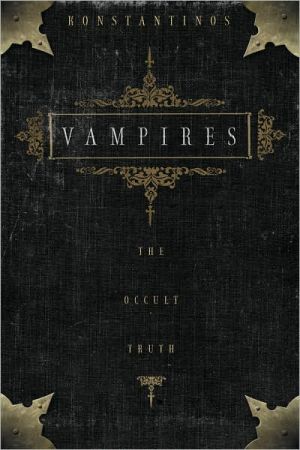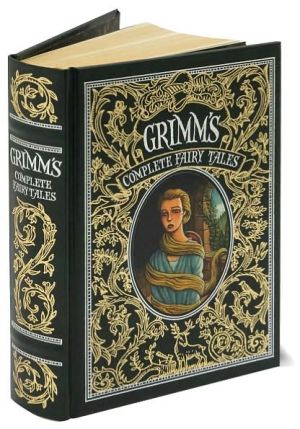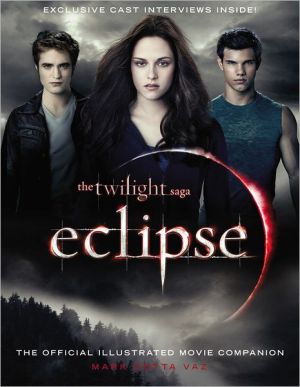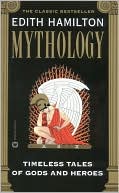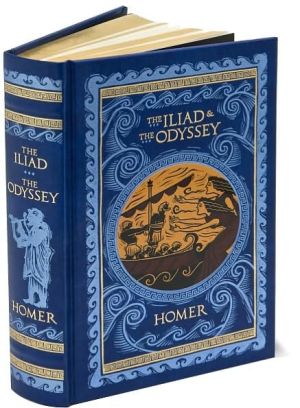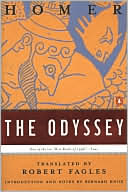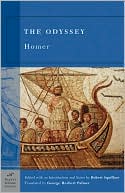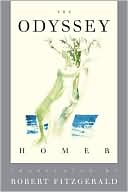Vampires: The Occult Truth
Discover the strange world of the undead and the proof that creatures of the night exist when you read Vampires by Konstantinos.\ The facts about vampires are stranger than anything you may have read, heard, or imagined before. In Vampires you'll learn the truth about the undead. It rips away the myth and exposes the habits and lifestyles of these beings.\ Vampires reveals the occult truths about these creatures including actual first-person encounters with vampires of all types—the ancient...
Search in google:
Discover the strange world of the undead and the proof that creatures of the night exist when you read Vampires by Konstantinos. The facts about vampires are stranger than anything you may have read, heard, or imagined before. In Vampires you'll learn the truth about the undead. It rips away the myth and exposes the habits and lifestyles of these beings. Vampires reveals the occult truths about these creatures including actual first-person encounters with vampires of all types—the ancient undead of folklore, contemporary mortal blood drinkers, and the most dangerous creatures of all: psychic vampires who intentionally drain the life force from their victims. - Learn about the four types of vampires - Read about vampire legends from around the world - Discover vampires from history, including: - Arnold Paole of Serbia - Peter Plogojowitz and the Count de Cabreras of Hungary - The vampire of Croglin Grange, Cumberland, England - Countess Elizabeth Bathory, responsible for up to 650 deaths - Gilles de Rais - Fritz Haarman, of Germany, from ninety years ago - John Haigh of Yorkshire, England, from just before WWII - And of course, the real Vlad Dracula - Present-day blood drinkers - How to protect yourself from vampires Included are letters from contemporary vampires. You will be shocked and surprised as you discover what these people are really like. Besides learning about the psychic vampire that unintentionally drains you of your energy as well as the intentional psychic vampire, you'll learn rituals for protection and methods to avoid falling into their clutches. Vampires finally reveals the truth about the undead. You will be fascinated when you discover who they were and what they are now, and you'll be grateful when you learn how to protect yourself from them. This is not a book of fantasy and imagination, but of science, history, and spirituality.
C H A P T E R O N E SEPARATING FACT FROM FICTION\ While preparing this book, I have been asked, by many skeptical people, questions like: “How could vampires really exist?” or even, “Are you serious?” Most went on to add that the bloodsuckers of fiction seem a bit hard to believe in; after all, if they really feed on humans like they are portrayed in the movies as doing, wouldn’t there be an enormous number of victims found in alleys, or perhaps even in graveyards,\ on any given morning? There obviously haven’t been any such victims,\ though, because their blood-drained bodies and the familiar punctured neck wounds would have attracted enough media attention to make belief in vampires commonplace by now.\ These types of arguments make it a little hard for most people in the twentieth century to believe in the existence of an order of being that can live forever and feed off the vitality of humans. In this technological age, who among us finds it easy to accept that such a creature can escape the notice of science?\ Before we get into the hard-to-believe nature of the vampire’s attributes and abilities, let’s do away with the need for any pre-existing scientific skepticism. I consider those who are interested in the occult to be the scientists of the future. If everyone were to accept that what science has not yet discovered does not exist, science would stagnate and society could not advance. Keep in mind that a lot of things that the ancients considered mystical have been explained by science—and the ancients believed in vampires.\ Let’s apply some rational, scientific thinking to the subject of this book’s study. The truths presented in these pages have been proven empirically, both by myself and by others before me. In each case presented in the chapters that follow, all the evidence (which takes many different forms) is presented fully to show how certain conclusions were drawn. In other words, don’t take my word for the bizarre, yet true, facts you are about to read. Please judge them for yourself. My intention in writing this book was not to create a fantastic tale of vampirism and expect others to believe it; that is what vampire novels are for (and there are a lot of those—around the time of this writing, two or three are published every month,\ with even more coming out near Halloween). Instead, I wanted to present the first complete treatise on the subject—one that looks at all the realities of vampirism in detail and separates the truth from the fiction.\ Doing away with preconceived notions is one of the hardest things that an investigator of the paranormal has to do. It is important to keep an open mind when dealing with things that do not lend themselves to easy observation—to my knowledge, no immortal vampire has ever knocked on a medical scientist’s door and asked for a physical exam. The subject of our study is a covert one, and we therefore have to look for covert clues. Solving the puzzle of vampirism requires that we see all the pieces and recognize them for what they are. Keeping an open mind makes that possible.\ In the case of vampires, we have to remember that they are not fictional creatures created by early novelists. The undead are creatures of folklore, and the first literature mentioning them was in every way considered nonfiction by those who penned it; in fact,\ most of those early treatises were written by the respected scholars of the day. Few people, however, are aware of the various tales of the undead that were not “made up” for the racks of bookstores,\ but were instead documented for preservation in the libraries of the time.\ Fortunately, age-old occult literature about vampires still exists.\ From various firsthand accounts, diaries, and investigations, one can quickly see that something very real was being described. There are,\ however, several distinctions between the vampires described in those texts and the beings portrayed in popular fiction and movies.\ Before looking for the reality behind the legends, it is important to first separate the legends from the fiction. Writers like Anne Rice,\ Bram Stoker, Tanith Lee, and Brian Lumley, among countless others,\ have created fantastic attributes and powers for their vampires, but those beings are not the subject of our study. Trying to find the truth behind those fictional creations is as ridiculous as trying to find the truth behind the monster created by Mary Shelley in Frankenstein.\ Therefore, let’s begin our uncovering of the truth by defining the attributes of the vampire of folklore—the creature that you might be surprised to discover exists in more than one form.\ THE APPEARANCE OF THE VAMPIRE The vampire of folklore does not closely match the romantic character that has been developed in the past century. Since Bela Lugosi’s suave portrayal of Dracula in 1931, vampires in fiction have become progressively better looking and more and more associated with sexuality through the years—a far cry from the creatures of folklore.\ What does the vampire of folklore look like? Ancient descriptions of the appearance of the undead vary just enough to indicate that two distinct types of beings were described: vampires that seemed for the most part to be physical, and vampires that had almost phantom-like attributes. Of the two, the first type of creature was reported the least often. As we’ll see later in the book, several physical cases of vampirism have been dismissed by modern-day medical experts as having natural causes. For now, let’s deal with each in turn, starting with the first.\ The typical “physical” vampire or revenant of Europe did not wear a cape or stylish clothing. Remember, the undead are supposed to be the risen dead. They therefore appear, according to folklore, as most corpses would if they were dragged out of the ground. In other words, when people reported seeing vampires hundreds of years ago, they described them as wearing what they were buried in—a shroud.\ The descriptions would go on to include a few pronounced characteristics:\ For starters, the physical vampire of folklore was not pale. In fact, most documents indicate that the skin color of an undead typically had a reddish tinge, as if the blood it ingested infused every cell of its body. That made a lot of sense to the investigators of the time,\ because when they would drive a stake through a suspected vampire’s heart, blood would explode out of the hole as if the body were saturated with it.\ That brings us to the next characteristic of physical vampires.\ Unlike the thin, almost emaciated look that vampires have in movies,\ the folkloric creature was often reported as appearing bloated. Again,\ that seemed perfectly logical to the vampire hunters of the time.\ They believed that the bloated appearance was a result of the vampire being gorged with blood.\ Other characteristics of the physical folkloric vampire are ones that have been used by various authors of fiction. Those attributes include a horrible odor or rancid breath; long fingernails and hair,\ which, according to folklore, keep growing in a vampire; sharp teeth,\ although not necessarily eye-teeth fangs; and in some cases, eyes that blaze with a supernatural, often red, light.\ Keep in mind that many of the above characteristics were for the most part observed in vampires that were in their coffins. A lot of the cases of physical vampirism were “solved” when a vampire hunter would open the coffin of an alleged undead and dispose of it with a wooden stake and, usually, fire. Often, the characteristics of natural decomposition would be confused for undeath. For that reason, as we will deal with in chapter 3, several famous documented cases of physical vampirism involve vampires that cannot be proven as such.\ The other type of vampire encountered in folklore is the one that possesses phantom-like attributes. That creature is found in some of the most famous cases of vampirism, including that of Peter Plogojowitz,\ which will be described later in this book. As we’ll see below,\ what is most interesting about that type of creature is that it seems to be a vampiric spirit that is connected in some ways to the corpse it once animated.\ The phantom-like vampire of folklore feeds on living people while they are in bed at night. When the vampire appears, its features are usually quite familiar to the villagers it attacks—they recognize it as being one of their deceased neighbors. We will not examine the sort of attack made by the phantom-like type of vampire at this point (although the short scene in the introduction is an example). Suffice it to say that once the creature removes itself, the victim usually recalls the identity of the specter, often inciting a frenzy in the villagers.\ The actual appearance of the phantom-like vampire, other than resembling the deceased person who became undead, varies in different accounts. Often, the vampire is described as assuming a dark form, with its facial features becoming clear for only a moment before the actual attack begins. Other accounts indicate that the vampire,\ although somewhat transparent, was immediately recognized by the victim when it entered his or her bedroom at night.\ Even though the preceding descriptions are almost universal among the cases of folkloric vampirism, the more recent and even modern-day incidents of spectral, vampiric attack indicate that victims only rarely recognize their phantom assailants. For the most part,\ vampires of the above type are described as dark masses, with occasional reported observations of red or glowing eyes. The fact that fewer eyewitnesses of the above type of creature in the past hundred years notice any facial features indicates that there is a severe shift in popular beliefs. In other words, fewer people today believe that the dead can rise to harm the living. In the past, however, the belief was strong and could possibly be the reason that a supernatural assailant would quickly assume the features of the deceased.\ Whether or not the villagers of the past were right in their assumptions of the identities of phantom vampires cannot be proven. What they found when they opened the graves of those that were identified as the undead is still interesting. The appearance of the physical vampire described earlier is in many ways similar to the corpses of the spectral vampire as well. Suspected bodies,\ when exhumed, often appeared bloated, ruddy, and somewhat fresh, even months after burial.\ If the vampire we are discussing is truly a phantom, why should its corpse appear in that bizarre way? As we shall see later, the physical attributes described by the vampire hunters of years ago can be explained naturally. For example, when a body decomposes, gases are created within it, causing the body to expand and appear bloated. But what if the instincts of those hunters were stronger than their abilities at conveying their feelings in words?\ The general occult theory on the spectral type of vampire that thrived in folklore is that the spirit fed on either blood or energy (or both) by night, and by day returned to the corpse to infuse it with this energy. That would explain how a vampire could come up from its coffin without disturbing the soil—it could simply move through the ground in its astral body. Why a spectral vampire would wish to remain in its earthly form by day is another matter. Later in the book we’ll take a look at several occult theories explaining the above process.\ POWERS OF THE VAMPIRE As we’ve discussed, the difference between folklore and fiction is unclear to most when describing the appearance of the vampire. The same holds true when identifying the powers of the vampire; misconceptions abound. Again we have the problem: What’s documented and what’s made up? Before going any further, let’s briefly clear that up to some extent. Later, in the chapters that deal with each of the different types of vampires, we will go into great detail when describing their powers, along with an indepth look at instances when those powers were displayed.\ The physical vampire of folklore was not as endowed with supernatural abilities as its fictional counterparts are. In fact, most documented cases indicate that those vampires did little more than come in through windows, suck the blood of their victims, and flee into the night once again. Of course, the powers of a folkloric vampire depend on its ethnic species.\ Yes, you read correctly; that last phrase is “ethnic species.” I use this to indicate that each culture had different names and attributes for vampires. When vampires are separated into two classes (as we have been doing in this chapter), something interesting happens.\ The primary powers of the vampires from different countries that fit into the same groups (physical or phantom-like) are found to be almost identical. By “primary powers,” I refer to the means vampires use to obtain their sustenance. Conversely, the differences between the secondary powers of ethnic vampire species are in certain cases extreme. For the purposes of this book, “secondary powers” are any abilities that vampires do not need to obtain sustenance; keep in mind that those powers still might serve some other purposes that aid survival.\ Later, we’ll divide vampires into four groups to further identify their powers, but for now, let’s get to some examples of the distinctions in types of powers. It will probably come as no great surprise to anyone that one of the primary powers of the physical vampire is the ability to live off the blood of humans. Another primary power is also one that most people have come to expect from the undead—great strength. In most cases of physical vampire attack,\ the victim is reported as being unable to wrestle off the vampire while it feeds.\ The secondary powers of the physical vampire vary to a great extent. Throughout this book, you will come across several secondary powers exhibited by vampires in different cases. To whet your appetite for now, however, here are a couple of the least-known, and most unusual, secondary powers that are found in different types of physical vampires.\ For starters, in a few countries there is a belief that vampires can still have sexual relations with the living. Unlike what popular fiction promotes, that was not considered a desirable thing. The vampire’s power to do that is similar to the powers of the incubus or succubus.\ Any children of such a union are born with the ability to sense the presence of an undead. Also, those offspring are considered (by many cultures) to be able to destroy vampires with ease.\ Another attribute of the physical vampire (in some areas) is its ability to at some point live life again as a mortal. Of particular note is the langsuir, a female vampire of Malaysia that can be captured and cured of her curse in such a way that she can once again live an almost normal life. The langsuir, along with several other species of vampires, will be discussed in more detail in the next chapter.\ The primary powers of the phantom-like undead are not as widely known. The two that always seem to be present in documented cases\ (both ancient and new) are the ability to drain vitality from living humans (not necessarily blood—most likely just energy), and the ability to cause paralysis in their victims. As shown later on, the taking of vitality is almost always done in the form of psychic energy.\ Sometimes, it was suspected that such a vampire could still take blood in an immaterial form, because the victim would on occasion have bite marks or scratches on his or her body. Modern occult theory,\ however, has a different explanation for those marks. That’s dealt with in chapter 7. Phantom-like vampires have some interesting secondary powers as well.\ Many phantom-like vampires display shape-changing ability.\ Numerous victims who have survived this type of vampire’s attack report the changing of the creature’s form as it prepares to attack,\ and sometimes, during the attack itself. This power is not limited to the appearance of the vampire; it seems that the creature can also change from immaterial to material form, and vice versa, at will.\ That would appear to make things difficult for the would-be vampire hunter.\ Another interesting secondary power of the spectral vampire is its ability to fly or levitate. That seems easy to believe for a creature that can assume a noncorporeal form. In most documents detailing the attack of one of those creatures, the creatures are described as hovering over their victims before lowering themselves as heavy masses upon their prey. The phantom vampires are also reported as flying away almost instantaneously when they are finished feeding.\ Of course, they are able to fly through walls and the like.\ THE FOUR TYPES OF VAMPIRES Now that we’ve become comfortable with the distinctions between physical and phantom-like vampires, it’s time to shake things up a little bit. Let’s divide those groups again. First, let’s agree that all vampires do have something in common.\ If you look in a dictionary you will find a few definitions that relate to vampires. The definition of vampirism itself is interesting because it is often given as “the practice of preying upon others,” or something similar. Does that necessarily have to mean preying on the blood of others? Some dictionaries go on to make that distinction,\ but we shall not in this book. Vampires, in reality, are those creatures who prey upon others for sustenance. The source of that sustenance, the method of obtaining it, and the need it fulfills are what distinguish the different types of vampires from each other.\ Immortal Blood Drinkers For the most part, immortal blood drinkers are the creatures we have been describing so far as “physical vampires.” These vampires are the ones that are most similar to the undead found in popular fiction, although, of the several ethnic species in this category, no one particular type possesses even half the powers attributed by authors and screenwriters to their vampires. With that distinction made, the existence of immortal blood drinkers should seem more feasible, but as we shall see in chapter 3, although there is a lot of evidence that seemingly supports the existence of this type of being, a lot of it is not completely convincing. For that reason,\ many who read this book might feel that immortal blood drinkers are the least likely type of vampire to exist. Before you make up your mind, however, take into consideration the fact that their existence cannot be entirely disproved.
CONTENTS INTRODUCTION xi CHAPTER ONE Separating Fact from Fiction 1 CHAPTER TWO Vampire Beliefs from Around the World 15 CHAPTER THREE Immortal Blood Drinkers 35 CHAPTER FOUR Mortal Blood Drinkers of the Past 61 CHAPTER FIVE Mortal Blood Drinkers of the Present Day 75 CHAPTER SIX Protection from Blood Drinkers 97 CHAPTER SEVEN Psychic Vampirism 111 CHAPTER EIGHT Unintentional Psychic Vampires 127 CHAPTER NINE Intentional Psychic Vampires 143 CHAPTER TEN Protection from Psychic Vampires 159 CONCLUSION 171 BIBLIOGRAPHY 173 INDEX 175
